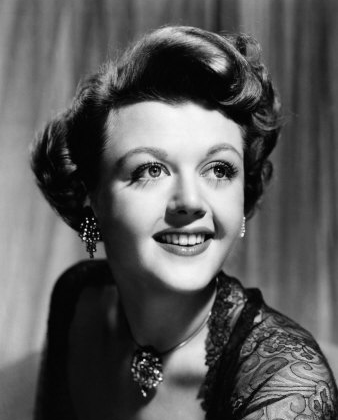

The Art of Living is an occasional series about people who seemed to know something about living.
There are some celebrities who are not just in the public eye, but who have also captured the public heart. Dolly Parton is an excellent example. We know her not only for her music, but her generosity, her kindness, and her self-deprecating humor. Plenty of people would like to live more like Dolly Parton because of her virtue. People even write about it, see Dolly Parton is Magnificent. There are other celebrities who are exemplars in many ways, but the public is less aware. Angela Lansbury was one.
Most people of a certain age remember Angela Lansbury from Murder She Wrote. Or they recall her as the teapot in the original Beauty & the Beast or a character in Bedknobs and Broomsticks. She had a comforting accented voice and a kindly manner. She was like a cute mother or grandmother. Drawing from a broader context, some will remember her from her many Broadway roles, at a variety of ages. Others, perhaps more versed in cinematic or Lansbury history, will recall that she was once a young, onscreen vixen. She was the bad girl opposite Judy Garland in The Harvey Girls. In that musical, Lansbury was one of the disreputable “dance hall girls.” You can see some photos of Lansbury in that role here. She was also a villain in The Manchurian Candidate. The range of her work alone could make us appreciate Angela Lansbury.
She was good enough to play bad and good characters convincingly, but the way in which Angela Lansbury inhabited being an older actress was very admirable. Some actresses, like Greta Garbo, had no desire to be in the public as they aged. Lansbury embraced her aging and she was willing to confront reality and to be vulnerable. After her death, writer Patrick Healy wrote an essay titled “A Phone Call With Angela Lansbury Changed Me.” He recalled speaking with her for an article years before and having to ask whether or not she sometimes used an earpiece to help with remembering lines on Broadway—something frowned upon by many. He was nervous, but she was “game to talk, quick with a laugh, candid. I’d assumed that aging and memory were vulnerabilities; she saw them as facts and addressed them confidently.” Her combination of vulnerability and bravery helped Healy as he dealt with his own parents’ aging.
According to Healy, “Ms. Lansbury brought a combination of dignity and forthrightness to her life and work.” Years after that conversation with Lansbury, Healy had a conversation with the playwright Terrence McNally about Lansbury. Healy learned that Lansbury had helped McNally confront his drinking problem. Though she barely knew him, she saw McNally at a party and waved him over, “And she said, ‘I just want to say, I don’t know you very well, but every time I see you, you’re drunk, and it bothers me.’” McNally told Healy, “I was so upset. She was someone I revered, and she said this with such love and concern. I went to an A.A. meeting, and within a year, I had stopped drinking.” Where others had enabled or excused him, she had spoken to him frankly with concern. It made a difference.
Yet there is something else that is maybe the most remarkable thing about Angela Lansbury. Angela Lansbury was someone who could see things for what they were and who was willing to do something about it. It wasn’t only McNally that she saw clearly. In the 1960s, she had a teenaged daughter who had gotten into drugs, even hard drugs. But perhaps even worse, this daughter had fallen into a bad crowd. A very bad crowd, centered on the “charismatic” Charles Manson. What did Angela Lansbury do? She packed up her daughter and the rest of the family and they moved to County Cork. This was before the Manson murders, when people like the Beach Boys were still interested in him. Lansbury saw the danger for what it was and she acted, very quickly, in the best interest of her daughter, who ended up having a pretty normal life.
What we know about famous people is always extremely limited. We often think we know more than we do. They are also, like us, all imperfect, but Angela Lansbury was admirable in many ways. And as someone who worked her whole life, in so many roles, at so many ages, she was a living testament to the dignity and beauty of work. She was never only looking to escape to a beach somewhere. She was an example of a professional who could understand the purpose in work.
But even if her personal life had been a shambles and she had worked only to pay gambling debts, she still would have given us all something. All the people who play the parts—on stage or on screen—that shape our mental worlds and build our cultural context give us something. They give us archetypes and characters and plots to help make sense of our world. And they give of themselves to do that. Musicians give us their songs and their voices to offer a soundtrack for our lives. They give of themselves to do that, too. These people, artists, are never unerringly unselfish—that would be impossible—but they give to us much more than they get from us. We too often forget that.